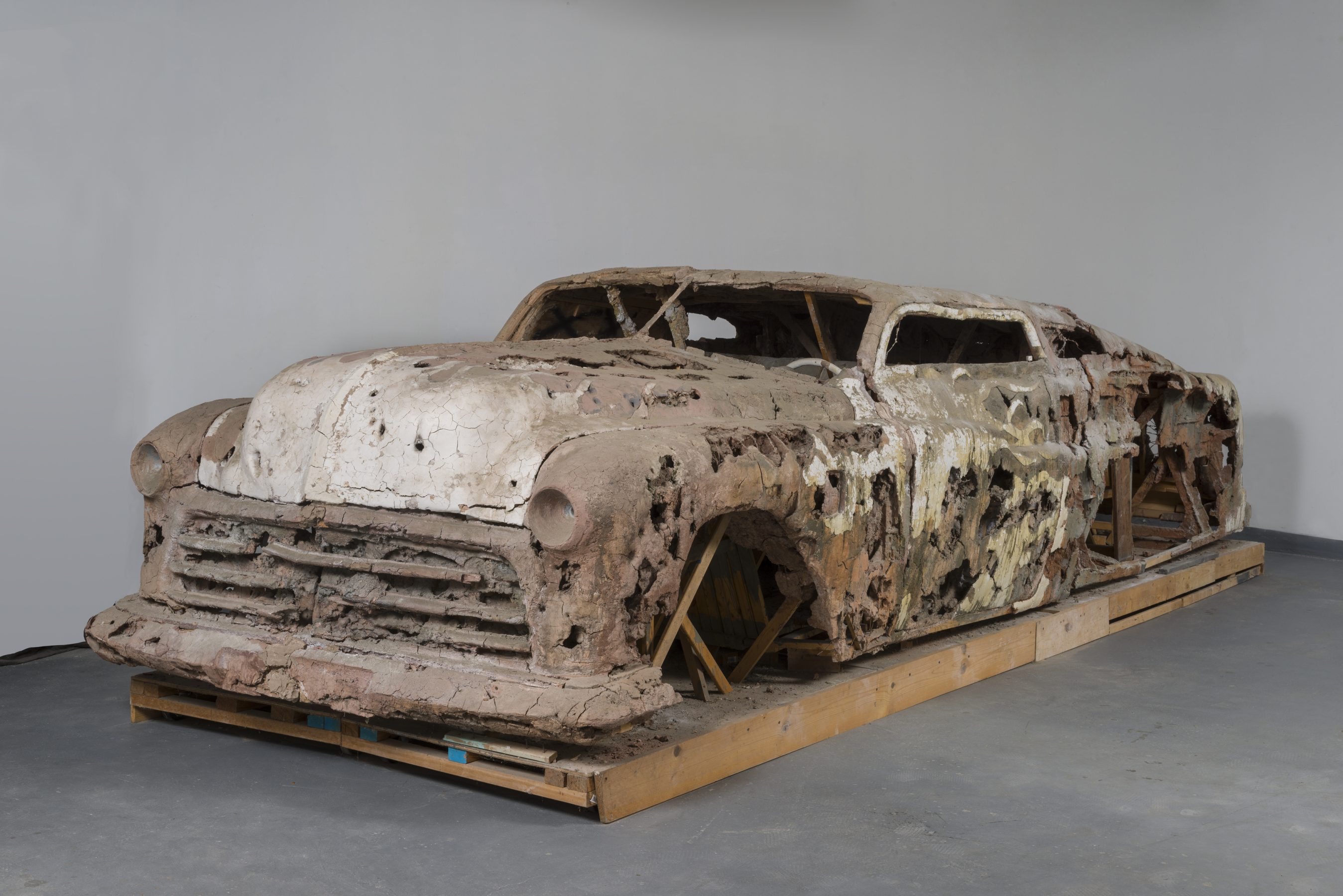Art is a constant struggle to balance culture and a sense of personal identity. Often artists must walk a fine line, expressing their own outlook on society while still creating a piece that is relatable to a diverse audience.
Visions and Revisions, open through Jan. 2017 at the Renwick Gallery, tackles this idea of identity in art. In doing so, the exhibit examines the challenge of using traditional art forms to express modern ideas: humanity’s encroachment over the natural world, the clash of different cultures in an increasingly diverse America, the movement of peoples and demographic change in the identity of a city, and the sense of nostalgia that pervades American culture.
The exhibit features four distinct artists: Jennifer Trask, Steven Young Lee, Norwood Viviano, and Kristin Morgin. Each hails from a different part of the United States and use their unique backgrounds to express the essence of living in contemporary America.
The first artist on which the exhibit focuses is Trask. Trask, who resides near Lake Tahoe, found inspiration for the piece in her college biology classes. The natural world is the focus of both her work and the materials she uses to create it. Peacock feathers, snake vertebrae, giraffe femurs, beetles, and other objects from nature are used in a way that blends in with, rather than defines, her art.
With her use of both natural and synthetic objects to make various decorative pieces, Trask forces the viewer to question mankind’s obsession with maintaining control over the forces of nature. Her pieces, simultaneously beautiful and grotesque, express the absurdity of the distinctions that humanity makes between the civilized and the wild and find stunning complexities in the structures of living things.
As the viewer moves out of the room dedicated to Trask, they encounter the work of Steven Young Lee. Lee, who was born in Chicago, currently resides in Helena, Montana. During his career he has traveled throughout Asia, and he was inspired by the traditional ceramics he observed around him while abroad. This appreciation of tradition is apparent in his work, but he gives it a modern, American twist. Lee places various American images (buffalo, eagles, and the national colors) throughout his pieces. In addition to this, he “deconstructs” his works, allowing holes and cracks to form in his vases and incorporating these imperfections into their aesthetic. This “deconstruction” allows Lee to depart from cultural tradition and capture his individuality in each piece.
This clash between Asian tradition, American imagery, and at times humorous imperfections allows Lee to express his identity as an Asian-American. Cup Panels, for example, is a series of miniature vases, each embodying Asian tradition, but together forming the colors of the American flag. In a society that is constantly growing more diverse, Lee allows an American audience to visualize how various cultural traditions help to shape the country they live in. In his search to express his identity, Lee helps to give a modern, diverse America its own.
After the immersive works of Steven Young Lee, the viewer sees a dazzling array of glass pendulums of different lengths hanging from the ceiling. Below is a world map, with different cities labeled and pinpointed by the shadows of the pendulums. This is the work of Norwood Viviano, who uses his art to capture movements in human geography over time. Each pendulum represents a city, its length corresponding to the city’s age and its width corresponding to the size of the city’s population through the years. Some cities, such as Beijing, hang low to the floor and blossom towards the top, a stunning representation of the ancient city’s rapid population growth. Younger cities, such as Sydney and New York, form shorter yet equally beautiful pendulums.
In his fusion of art and geography, the Detroit-raised Viviano calls attention to the forces that both shape the modern metropolis and destroy its cultural identity. His pieces give visual meaning to geographic and demographic statistics, allowing the viewer to clearly see the reaction and growth that changing populations cause in both individual cities and entire nations.
In a fourth and final room are the works of the guest artist, Kristin Morgin. Born in Brunswick, Ga. and currently residing in Gardena, Calif., Morgin uses unfired clay to create realistic depictions of what first appear to be weathered antiques.
Morgin fabricates a false sense of nostalgia and story throughout her pieces. This lets the viewer gauge how their perception of the past affects them, and also points to how society’s idealization of the past prevents us from fully appreciating the present. One of Morgin’s most prominent pieces, Sweet and Low Down, is a life-size sculpture of a worn down 1951 Mercury, a classic piece of Americana. The artist’s utilization of her audience’s sentimentality allows her to fully reveal how the stories of the past shape our modern life.
Visions and Revisions is an exploration of the forces that shape modernity, whether it be humanity’s struggles with nature, the increasing cultural diversity of modern American society, the movement and growth of populations, or society’s perception of the past. With this exhibit, the Renwick Gallery has found a way to connect art to the complexity of the present.





